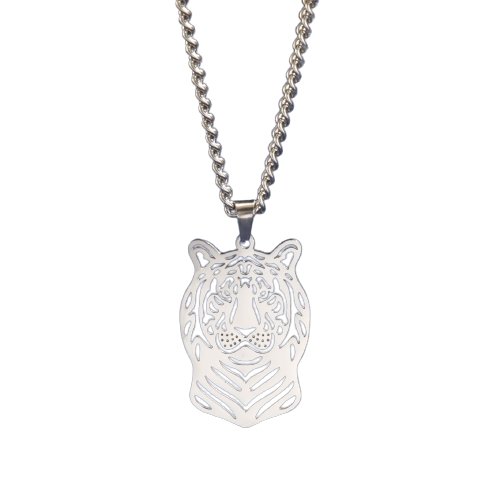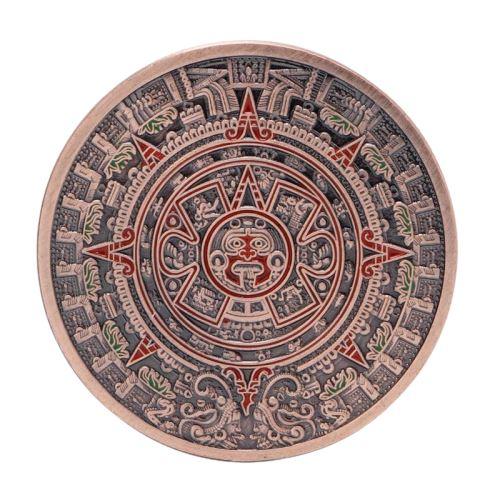Aztec Symbols: a Unique Civilization and Religion
The culture and art of pre-Columbian civilizations were very rich, all historians agree on this point. In particular, the subject of the Aztec symbol is of remarkable depth.
The Aztecs had not actually developed a writing system as we know it, with its alphabet. They therefore had no other choice than to use drawings and symbols to convey their messages.
Whether describing scenes from mythology on monuments or at the foot of temples, ensuring the transmission of knowledge between wise men or simply organizing life in a large-scale society, the Aztec symbol was absolutely everywhere.
In addition to sending us very specific messages each time, these Aztec drawings and motifs teach us something else: we are talking here about a people with obvious artistic qualities who developed techniques and an impressive pictorial quality given the tools at their disposal..
Often, an Aztec lucky charm will have multiple meanings, including at least one related to religion. The cults of the time occupied a central place in the lives of the Aztecs, influencing absolutely every aspect of life.
If you are interested in pre-Columbian cultures, you should find information through our collection of Mayan symbols or the one dedicated to Mexico.
Anyway, now we are going to see some of the most famous Aztec symbols.
So when you see one engraved on a stone or drawn on the wall of a temple, you will no longer wonder what message is hidden behind it.
Contents :

1) Chocolate: a luxury reserved for the ruling classes of the Aztecs
Chocolate was already considered by the Aztecs as an aphrodisiac and therefore served to symbolize sensuality and a certain decadence.
This food was therefore a strong Aztec symbol which reflected the power of the elites.
Moreover, for the religious authorities of the regions of Mexico, it was a sacred food, a kind of gift that the gods would have given to men.
Certain archaeological traces also testify to the use of chocolate and cocoa beans as currency.
In particular, certain drawings found in temples and palaces show us a kind of barter based on the exchange of beans.
In short, chocolate was indeed an Aztec good luck charm in a prominent political and social sense, a great marker of nobility and economic power.

2) The butterfly: Aztec symbol of transformations
In ancient Mexico, the butterfly (papalotl in Aztec language) was an animal associated with the god Xochipilli, the master of plants, nature and fire. Some have also linked it to the Sun.
The butterfly is an Aztec motif that often recurs in scenes depicting birth or death.
For the ancients, this insect carried the soul. Thus, a baby being born was represented with a butterfly resting on its head, while death was expressed through a butterfly flying away from the deceased.
In fact, the butterfly was an Aztec symbol associated with a whole bunch of transformations. We therefore count life and death, necessarily, but not only that.
Any change, any evolution that takes place in man during his life can be represented by the butterfly.
This is perhaps explained by the simple fact that there is nowhere in nature where the different stages of existence (and therefore the transformations between them) are as visible as in life. of the butterfly.
Initially a simple larva, the insect creates its chrysalis and then emerges in the form of a magnificent winged creature with shimmering colors.
When we talk about the butterfly as an Aztec good luck charm, there is also another point that needs to be made…
There is a butterfly deity in this culture named Itzpapalotl.
An allegory of women who died while giving birth to their child, this ancestral spirit appears in the form of a giant butterfly surrounded by stone knives.
Sometimes, too, certain Aztec motifs found here and there present the battlefields like a swarm of butterflies, thus symbolizing the hundreds of souls of warriors who leave our world to fly away.

3) The jaguar: Aztec symbol of the best warriors
The jaguar warrior is a type of fighter that we know well.
In ancient Mexico, these individuals were seen as the best soldiers, great hunters and beings possessed of superior strength.
Jaguar warriors were a sort of elite warrior class. Coming across one on the battlefield was either a blessing (if he was on your side) or the assurance of certain death (if he was in the enemy's ranks).
Obviously, such feared and respected beings quickly transformed into a prominent Aztec symbol.
When we look at these fighters, it becomes clear that their powers come from a very specific animal: the jaguar.
An important figure in shamanic cults, this beast was seen as the king of animals, the one whom everyone in the jungle respected and before whom all prostrated themselves.
Some early Aztec leaders also wore helmets made of jaguar skin to mark their social status. It is even said that the Aztec emperor had a “throne made of eagle feathers and jaguar skin”.
It was only later that the best warriors received this privilege: the jaguar warriors were born.
Today, you too can benefit from this honor by wearing a pendant featuring the jaguar like this one.
In short, seeing a jaguar in an Aztec drawing must therefore be interpreted as a sign of power and might (political or warlike).

4) The eagle: Aztec symbol of strength and power
The eagle is an animal to which many cultures around the world readily attribute a particular meaning.
When we find it in an Aztec drawing, it is often a safe bet that it represents warrior force.
A bit like the figure of the jaguar, the eagle was used by fighters to identify with an animal with obvious qualities.
Proud, the eagle flies calmly over the world. If, on the other hand, he has to fight, he will attack his enemies without the slightest hesitation, then resuming his peaceful flight without any further qualms.
Thus, this Aztec symbol represented courage, temerity and a certain composure in the face of the most terrible battles.
From a more religious point of view, the eagle was also associated with the Sun. Like the star of the day, this bird of prey crosses the sky, ascending and descending in turn.
The Aztecs also believed that the eagle was the highest flying animal, and therefore lived closest to the Sun and the gods.
To dig deeper into the subject, here is an article dedicated entirely to the place of the eagle among the Aztecs.

5) Corn: a blessing of nature and the good luck charm of the god Quetzalcoatl
The Aztecs said that the god Quetzalcoatl gave corn to humans to thank them for their loyalty.
For over 5,000 years, corn has been one of the most important foods for the people of Mexico. This was true for the Mayans, for the Aztecs, but also for current Mexicans.
This plant was so important to the life (and survival) of the people that a corn god was actually developed!
So, if you come across an Aztec drawing of an ear of corn, know that it could have a deeper religious meaning than you think.
In certain scenes, Aztec motifs representing corn will be rather associated with Tlaloc, the god of rain and agriculture.
Throughout the year, priests also performed rituals where corn was burned as an offering or in which it was celebrated.
Much like some villages have a beer festival, a pig festival or any other regional specialty, the Aztecs had corn festivals.
More than simple celebrations, these festivities were to ensure fertile land and abundant harvests for the coming season.

6) The Aztec calendar: an ancient and mysterious Aztec motif
The Aztec calendar, also known as the “Sun Stone,” is clearly the most well-known artifact of this civilization.
Even if there are several models, we are generally talking about the “Sun stone”, the most famous of all Aztec calendars which you can find here in the form of a piece.
Carved in 1497, the Aztec calendar serves two different purposes.
On the one hand, and as its name suggests, it serves as a calendar. This function is valuable for historians who thus better understand the rhythm of the life of society in Mexico at the time. In fact, the Aztecs saw time as a cycle, a great wheel that continually turned.
Based on this principle, they developed two major calendars (one which served religious life while the other served civil life) dependent on each other. Every 52 years, their two calendars aligned which, for them, meant guaranteed disaster.
On the other hand, this artifact clearly constitutes a tribute to the Sun god. The different Aztec motifs that you can see above all have a very specific meaning that it would take too long to analyze here. Please note, however, that the general fresco depicts immense respect and worship dedicated to this divinity.
The Mayan calendar is also a mystery from a technical point of view.
With a thickness of around 1 meter, it weighs no less than 25 tonnes…
This is clearly impressive considering the means that the artists had at their disposal!

7) The skull: Aztec motifs associated with death
Whether they come from sacrifices or were recovered on the battlefields, the Aztecs worshiped the human skull.
The skulls were stored in enormous wooden supports similar to scaffolding called “tzompantli”.
A Spanish conquistador notably reported in a report having found a gigantic locker in the city of Tenochtitlan containing… 135,000 skulls!
Other stories mention some 60,000 heads found here, or another 40,000 found there.
Really, we can talk about a butcher's shop!
You will find additional information on the fate of the heads of those sacrificed in Mexico here.
In short, the question therefore arises: but why have thousands of skulls been collected in certain places in this way?
There are many lines of research and not all historians agree on the question, but it appears that these strange constructions served to humiliate the enemies of the Aztecs.
Seeing the skulls of his brothers and sisters, the slaves of the defeated cities and kingdoms could not really want to revolt, that is clear.
According to some sources, these skull supports served as altars to death gods, a kind of giant Aztec good luck charm that was used to work with certain entities.
We know in fact that certain Aztec motifs representing skulls are in reality allegories of divine powers.
It is therefore possible that the same is true for “physical” skulls.

8) Human sacrifice: symbol of a violent society
We couldn't talk about the Aztec symbol of the skull without talking about their main "source of supply": human sacrifices.
Human sacrifice was practiced to some extent by many peoples in Mesoamerica for many centuries.
However, it is in Aztec culture that this practice gained the most momentum. Some estimates speak of 20,000 executions per year.
Killed by arrows, shot down during ceremonial combats, drowned or burned: all means were good for practicing sacrifices.
However, the most striking figure and which very clearly constitutes the image we have in mind is rather the extraction of the heart. This practice consisted of removing the heart… while the victim was still alive.
It gives us chills…
In fact, human sacrifices were so important in Aztec culture that the temples where they were practiced constitute the most beautiful monuments it has left us.
We can notably cite the “Temple Mayor” of Tenochtitlan or Tlatlolco as an example. If you want to visit these prominent archaeological sites, here is a tour operator that organizes trips to Mexico. They should easily find you what you are looking for.
Lucky charms featured in this article

Jaguar Head Pendant
See more
Mayan Calendar Commemorative Coin
See more
